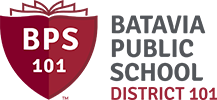2:150-AP2 Curriculum and Assessment Advisory Council
2:150-AP2 Curriculum and Assessment Advisory Council
Curriculum and Assessment Advisory Council
CHARGE: The Curriculum and Assessment Advisory Council (CAAC) will monitor and evaluate district curriculum, assessment and instruction and make recommendations to the Board of Education Policy Committee.
1. Curriculum and Assessment Advisory
2. Tasks and Documentation Needs
|
3. Completion date: On going
4. Meetings:
First Thursday of each month.
Typically 4:00 pm-6:00 pm
5. Composition
Chairpersons: Chief Academic Officer (CAO) (non-voting)
* Board of Education (1 member)
* Administration (3- 1 representative from each level)
* Batavia Education Association Representatives (5 representatives: 1 classroom teacher from each level (2 elementary) and 1 from support)
6. Responsibilities of Members:
a. Attend all meetings
b. Support the purpose and work defined by the team
c. Behave in a professional manner; abide by group norms
d. Respect the confidentiality of written and verbal communication
e. Not speak or act for the ad hoc team without prior authority
f. Act fairly and be impartial in their role on behalf of BPS101
7. Nomination and Selection Procedures:
a. Selection procedures
i. Nomination form: See attached
ii. Nomination due: September 15 of each year for open seats
iii. Selection criteria: Curricular expertise and interest, commitment to professional learning, communication skills and data analysis skills will be considered in selecting candidates for the committee positions
b. Terms: 3 years. The Team year is November through October. Terms will be staggered. Initial terms will be staggered after three years.
i. Middle School (2014-15)
ii. Elementary School (2014-15, 2015-16)
iii. High School (2015-16)
iv. Related Services (2016-17)
c. Vacancy: All vacancies will be filled within 30 days of receiving notice of an open position. Administrative vacancies will be filled by the Superintendent and the BEA will fill any teacher vacancies
d. Absent Member: A representative member who is absent more than two meetings in a team year (November to October) shall be contacted by the CAO to discuss needed support or transition. Continued absences will result in a discussion with BEA leadership or Superintendent.
8. Chair and Recorder
a. Co-Chair: The Advisory Team shall elect a BEA Co-chair to advise and serve in the absence of the CAO.
a. Responsibilities include:
i. Communicate (BOE presentation, communicate with BEA membership)
ii. Collaborate on the agenda for each meeting
iii. Liaise between BEA officers and CAAC
iv. Chair meeting in the absence of the CAO
b. Nomination and Election: Members will self-nominate each November for the position. A voice vote will be used for election to the position.
b. Recorder: Annually, in November of each year, a recording secretary shall be elected by the voting members.
a. Responsibilities include:
i. Note taking during meeting
ii. Draft communication/talking points to stakeholders
b. Nomination and Election: Members will self-nominate each November for the position. A voice vote will be used for election to the position.
c. Publisher: Annually, in November of each year, a publisher shall be elected by the voting members.
a. Responsibilities include:
i. Lead the group in clarifying decisions regarding communication to stakeholders
ii. Publish the information for stakeholders to access
b. Nomination and Election: Members will self-nominate each November for the position. A voice vote will be used for election to the position.
9. Records of Meetings
a. Agendas of each meeting should be posted 48 hours to advance by the recorder.
b. Communication will be reviewed and should be posted electronically to all employees within 48 hours.
10. Annual report to the Board of Education the progress towards goals
a. Delivered by the CAO and Co-Chair with participation of the team as needed
b. Developed collaboratively by the committee
c. Report is submitted to the Superintendent and BEA President by the end of September each year
11. The committee will review the charter every November and revisit the foundational principles every 3 years.
Date Adopted: April 5, 2013



